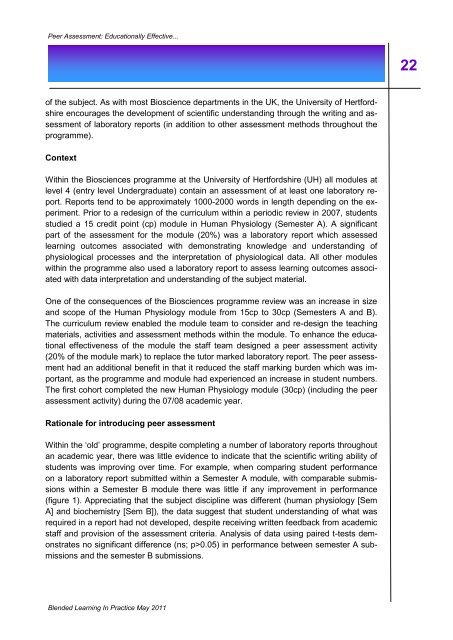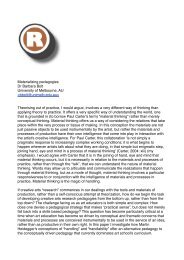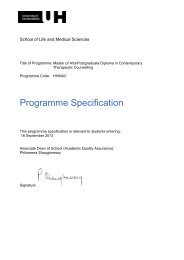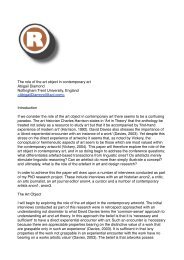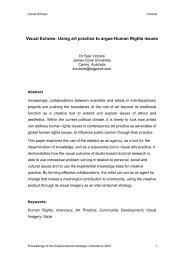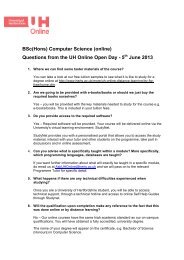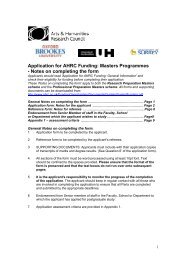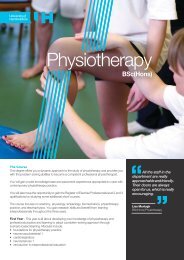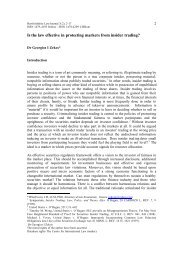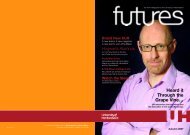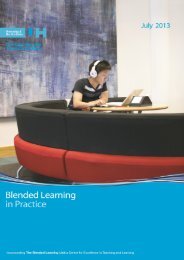3 - University of Hertfordshire
3 - University of Hertfordshire
3 - University of Hertfordshire
You also want an ePaper? Increase the reach of your titles
YUMPU automatically turns print PDFs into web optimized ePapers that Google loves.
Peer Assessment: Educationally Effective...22<strong>of</strong> the subject. As with most Bioscience departments in the UK, the <strong>University</strong> <strong>of</strong> <strong>Hertfordshire</strong>encourages the development <strong>of</strong> scientific understanding through the writing and assessment<strong>of</strong> laboratory reports (in addition to other assessment methods throughout theprogramme).ContextWithin the Biosciences programme at the <strong>University</strong> <strong>of</strong> <strong>Hertfordshire</strong> (UH) all modules atlevel 4 (entry level Undergraduate) contain an assessment <strong>of</strong> at least one laboratory report.Reports tend to be approximately 1000-2000 words in length depending on the experiment.Prior to a redesign <strong>of</strong> the curriculum within a periodic review in 2007, studentsstudied a 15 credit point (cp) module in Human Physiology (Semester A). A significantpart <strong>of</strong> the assessment for the module (20%) was a laboratory report which assessedlearning outcomes associated with demonstrating knowledge and understanding <strong>of</strong>physiological processes and the interpretation <strong>of</strong> physiological data. All other moduleswithin the programme also used a laboratory report to assess learning outcomes associatedwith data interpretation and understanding <strong>of</strong> the subject material.One <strong>of</strong> the consequences <strong>of</strong> the Biosciences programme review was an increase in sizeand scope <strong>of</strong> the Human Physiology module from 15cp to 30cp (Semesters A and B).The curriculum review enabled the module team to consider and re-design the teachingmaterials, activities and assessment methods within the module. To enhance the educationaleffectiveness <strong>of</strong> the module the staff team designed a peer assessment activity(20% <strong>of</strong> the module mark) to replace the tutor marked laboratory report. The peer assessmenthad an additional benefit in that it reduced the staff marking burden which was important,as the programme and module had experienced an increase in student numbers.The first cohort completed the new Human Physiology module (30cp) (including the peerassessment activity) during the 07/08 academic year.Rationale for introducing peer assessmentWithin the „old‟ programme, despite completing a number <strong>of</strong> laboratory reports throughoutan academic year, there was little evidence to indicate that the scientific writing ability <strong>of</strong>students was improving over time. For example, when comparing student performanceon a laboratory report submitted within a Semester A module, with comparable submissionswithin a Semester B module there was little if any improvement in performance(figure 1). Appreciating that the subject discipline was different (human physiology [SemA] and biochemistry [Sem B]), the data suggest that student understanding <strong>of</strong> what wasrequired in a report had not developed, despite receiving written feedback from academicstaff and provision <strong>of</strong> the assessment criteria. Analysis <strong>of</strong> data using paired t-tests demonstratesno significant difference (ns; p>0.05) in performance between semester A submissionsand the semester B submissions.Blended Learning In Practice May 2011


